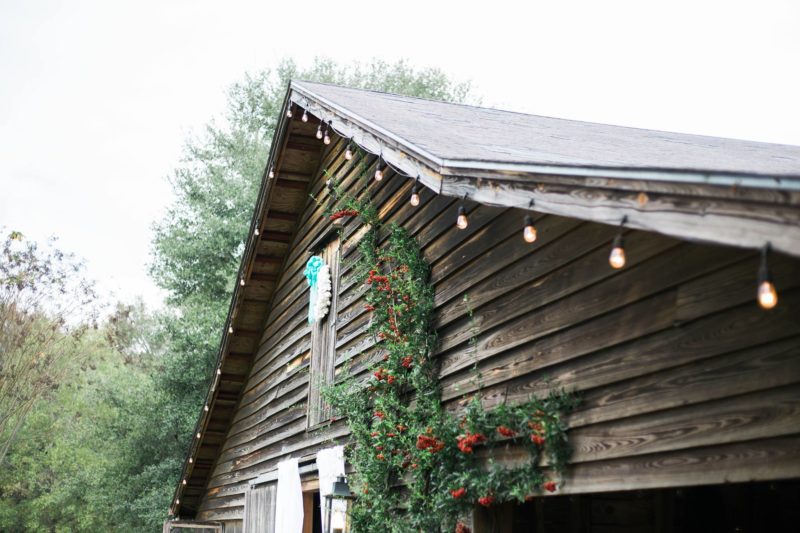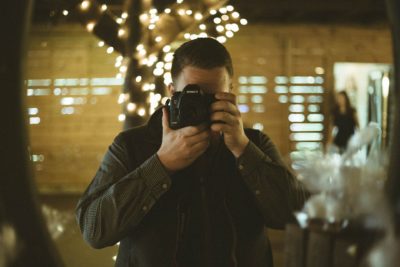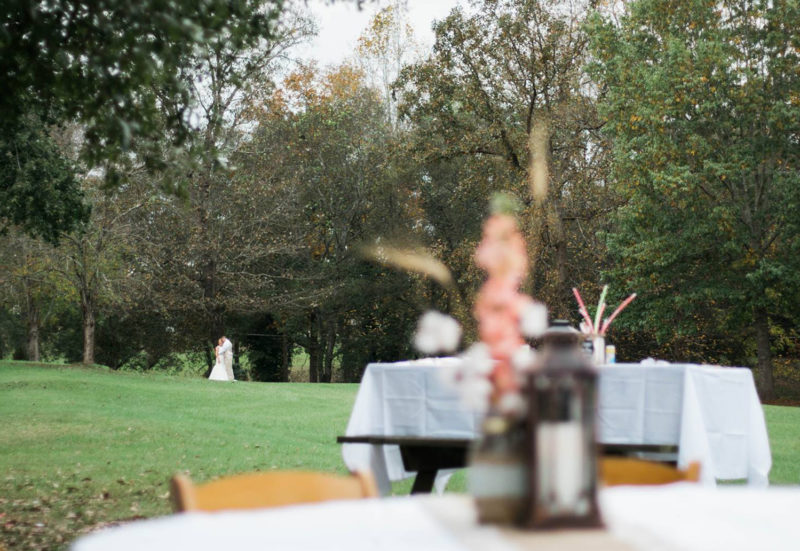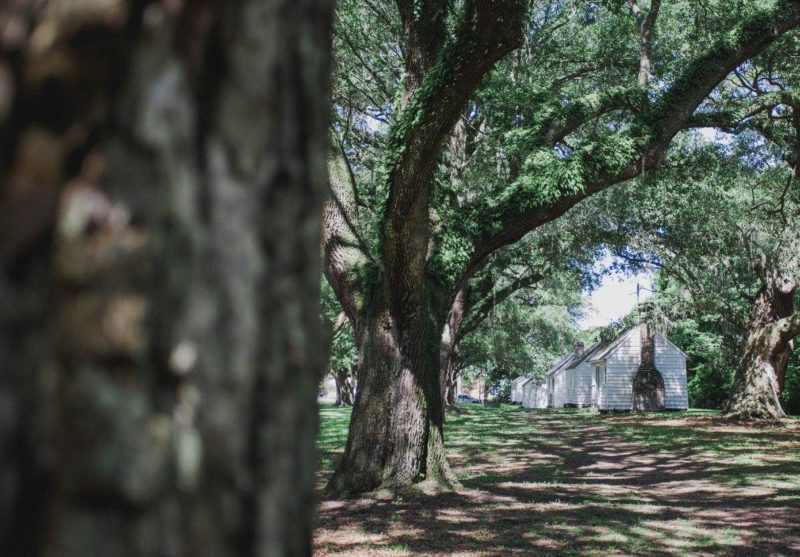A romantic union? Thoughts on plantation weddings from a photographer/historian
24 February 2020 – John R. Legg
It was a hot, scalding day in Georgia, and I was traveling to a large plantation southwest of town to photograph a wedding. When I arrived at the former plantation, there was a long driveway which led to the Big House—a prominent white structure at the center of the property. Once parked, I headed toward the swaying oak trees near the house to seek shade from the blistering heat. I glanced toward the porch, hearing a group of musicians play their rendition of Beethoven’s Symphony No. 1 on their stringed instruments. “The ceremony will begin momentarily!” announced one of the workers, so I quickly searched for the perfect spot to photograph the bride walking down the aisle. As she processed towards the altar, her white, sparkling dress shimmered in the summer sun. Behind her, I noticed the predominately African American staff preparing the reception space.
As the ceremony concluded, I followed the guests to the reception area, a large barn next to the Big House. I needed to capture details of the reception space and noticed the ornate decorations; roses, blossoms, and other plants decorated the white-clothed tables and platters. At the center of the head table I noticed an arrangement of cotton stems. It made me reflect on the violent history of cotton-growing in the fields that surrounded the idyllic plantation. The image of the antebellum plantation home came to mind: white guests, plantation owners, the horrors of chattel slavery, and enslaved men, women, and children.
Between 2012 and 2016 I photographed many weddings at venues like this one. Before I started graduate school at Virginia Tech, I worked as a full-time wedding photographer around middle Georgia, primarily at outdoor wedding venues—historic and contemporary spaces. At both plantations and other historic buildings, there was a deep, yet controversial connection to the past. As I started my graduate certificate in public history, I began to reconsider the historical reality and contemporary amnesia at these wedding venues.
During this time, I photographed a wedding just outside Atlanta at a Greek Revival-era home of someone who owned slaves during the early nineteenth century and was an ardent white supremacist. The wedding venue included some history of the past owner, yet it mainly focused on maintaining a private and/or pristine wedding space. Even though the property had what seemed to be former slave quarters behind the main house, the exhibit space on the inside ignored the history of slave labor on their property, as well as the site’s connection to cotton production. During a short break at the wedding, I asked a venue worker about site tours, the narratives they cover, and how much docents discuss slavery. “That’s not the point of the tour,” responded the employee. At these sites, white guests–whether visiting for weddings or historical tours–do not want to be confronted with traumatic history. Many Americans are attracted to the narratives about the past focused on wealth, the history of great men who gained power through the labor and dispossession of others.
During a graduate seminar in public history, we read Tiya Miles’s Tales from the Haunted South, which excels in unpacking the truth of tourism at historic plantation homes and profiteering off historical trauma. Miles’s analysis is important, given recent debates about hosting weddings at plantation sites. Quite often, plantation homes cater to white tourists and guests, those who may be entranced with the lifestyle of the antebellum planter class. They may want to feel nostalgic about the past, connecting to the scenes they grew up watching on TV. When the history of slavery is introduced on these tours, white guests often feel uncomfortable. “I was depressed by the time I left,” or “the tour was more of a scolding of the old South,” are opinions that white tourists have expressed about plantation tours that introduced the realities of slavery. Because of these attitudes and the unsettling of the white past, tensions surrounding plantation weddings have attracted national attention.
Slave labor camps—an alternate term for antebellum plantations that explains the capitalistic ventures and the realities of forced labor by enslaved people in these spaces—have recently been in the public eye as wedding promotion websites like Pinterest, Wedding Wire, Brides, and The Knot collectively halted the promotion of venues that glorified the myth of the Old South. [1] The venues under question often used ethically irresponsible language to promote their wedding spaces. According to Dhanusha Sivajee, chief marketing officer of The Knot Worldwide, by stopping this sort of oppressive language, “we want to make sure we’re serving all of our couples and they don’t feel in any way discriminated against.” Color of Change, a racial justice activist organization, challenged the major wedding websites to stop supporting those that consider their spaces “charming” or “pristine” when their spaces held African Americans in bondage. The president of Color of Change, Rashad Robinson, noted that weddings are a part of a “multi-million-dollar industry,” a system that profits off “glorifying sites of human rights atrocities.”
During my tenure as a wedding photographer, I often witnessed these issues first-hand. At one wedding, the venue was surrounded by cotton fields, which served as a backdrop to many of the wedding portraits. While trying to document a happy moment for the wedding couple, I imagined that just over 150 years ago, these fields held little joy for those forced to cultivate cotton. At one wedding in middle Georgia, each table featured cotton stems as their centerpiece, and above the reception barn was a wreath wrapped in white cotton.
As a means to understand this suppressed historical narrative, plantation homes—both public and private—as well as other historical sites that are deeply rooted in a traumatic past, propagate a specific narrative of the South. This nostalgia for whitewashed history is a means by which white Southerners focus on the aura of the plantation home, entranced by the frivolous lifestyles during the antebellum Old South, rather than acknowledging the violent realities of these spaces’ pasts. [2]
What can be done? A public historian may play devil’s advocate and think about scant funding at historic sites. Multi-thousand-dollar weddings assist in keeping the doors open. For others, the answer is simple: prospective couples and plantation venues need to realize that these spaces are inappropriate for weddings and look elsewhere. Public historian Nick Sacco addresses similar questions with an essay on Civil War-era battlefield gift shops that sell problematic items in their stores. He calls for more context: “How might a program on the history of American slavery be compromised when there are no books on the topic that are sold in the gift shop?” This raises a key question for plantation homes and historic sites that host weddings: How can a historic site that might be focused on educating others about the history of enslavement also allow weddings that manufacture a falsified image of the Old South?

The reception barn at a wedding in South Georgia uses a wreath, full of cotton, for a decoration. Photo credit: John Legg
What this debate over weddings in historic spaces tells us is that the past constantly seeps into the present, and we need to be aware of the continuity of historical issues. Some critics of asking new questions about the past, as seen in Casey Chalk’s Federalist article, feel threatened when efforts are made to move beyond the standard white-centric narrative of American history. Public historians who interrogate plantation slavery, however, seek to reconceptualize our perspectives on the past, revealing truths and elevating voices that have been silenced. Although individuals and venues themselves should reconsider their choices, it’s going to take a larger cultural transformation to fix these issues. In order to make that change, we all need to do our part in raising historical consciousness. As a photographer, I have reconsidered booking weddings at historic sites that contribute to profiting from a violent past. If plantations and other historic sites continue to book weddings in their spaces, their part could come in the form of providing more historical interpretation or acknowledgment of that fraught past to prospective clients. The removal of problematic terms like “charming” is a start, but more work needs to be done. One recommendation could be to offer historical tours to prospective clients. As these clients already walk around the premises to imagine their wedding day, a docent or venue worker could address the historical trauma that once took place there. Adding perspective to the past in the future will help transform how people perceive sites of trauma.
Ultimately, it’s important to acknowledge that the United States, as well as the world, needs responsible historical engagement and partnerships between historians and publics. Americans can strive to be ethical, responsible, and accountable for the past. They can be honest about the past and deal with difficult topics. The history of the United States is not a happy story of progress; often economic advancement came at the expense of others. If Americans can accept the realities of their nation’s fraught past, they may begin to see that plantation spaces were not charming, but traumatic.

A photo of Legg at a wedding in Middle Georgia that showcases cotton decorations in the bottom right corner. Photo credit: John Legg
~John R. Legg is a graduate student at Virginia Tech, studying the memory of the U.S.-Dakota War. His work related to Native American history and public history can be found in the Great Plains Quarterly, Activist History Review, Tropics of Meta, and the Minneapolis Star Tribune. Follow John on Twitter @thejohnlegg.
[1] See, for example, Edward E. Baptist, The Half has Never Been Told: Slavery and the Making of American Capitalism (New York: Basic Books, 2014).
[2] Cathy Stanton, The Lowell Experiment: Public History in a Postindustrial City (Amherst: University of Massachusetts Press, 2006), 28, 106; Bayo Holsey, Routes of Remembrance: Refashioning the Slave Trade in Ghana (Chicago: The University of Chicago Press, 2008), 6-8. Franklin D. Vagnone and Deborah E. Ryan, Anarchist’s Guide to Historic House Museums (Walnut Creek, CA: Left Coast Press, 2016), 72.






I really appreciate your far-ranging and very personal perspective on the persistent phenomenon of plantation weddings. I remember being taken aback when I first looked at buying a home in Georgia by the numerous property descriptions that touted the desirability of “plantation shutters.” Coming from the northeast, I was unfamiliar with these built-in window treatments (or at least I’d never heard them called that before) and found myself shivering at the idea that romantic associations with plantations for one’s home would even be desirable. Shows my naivete, I suppose. Of course, thinking about the phenomenon of plantation nostalgia since then has sent me down a rabbit-hole of self-reflection. A childhood love of Colonial Williamsburg, complete with non-contextualized play at kitchen work in the home of a middle-class family that owned slaves is partly what kindled my passion for public history in the first place. Much has changed in the interpretation of labor and enslavement at Colonial Williamsburg since I was a child, but I know it wasn’t emphasized in the same way during that time which fed my fantasies as a young white girl from suburban New Jersey. Falsely, I believed that New Jersey was never a place where people owned slaves. I associated New Jersey more with Indian Removal, but only vaguely. I had learned about the Lenni Lenape Indians in 4th grade NJ history, but strictly in that “people of the past” sense. Thinking about wedding sites, history, and nostalgia prompted me today to learn more about the contemporary descendants of the Lenape people who would have lived on the land that eventually became the NJ State Fairgrounds in Hamilton, which became Grounds for Sculpture, where I was married in 2007. That same year, they launched a website to tell their story: https://nanticoke-lenape.info/history.htm Embracing history in all its complexity inevitably leads away from any romance associated with imagining yourself in the past. And that can come with a sense of loss. But past the romance is a place of appreciation for the people whose labor, whose ideas, whose intersecting lives left marks on the landscape that we all inhabit today. I approach my public history work with a sense of appreciation for the preservation of places that can tell stories. Some stories invite acknowledgment in times of celebration. And some stories should make us re-think the places where we choose to celebrate ourselves in the present moment– or at least the ways in which we choose to enact those celebrations. Thanks again for your contribution to this important, and ongoing, conversation.